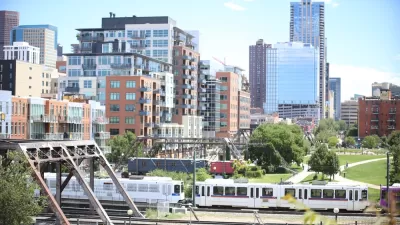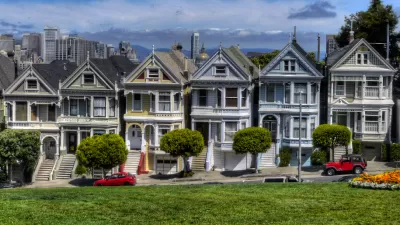A revealing examination of demographic data shows a country that bears little resemblance to the 1950s era that bequeathed its housing and transportation models to current generations.
Hamilton Lombard digs into recently released U.S. Census data to reveal an interesting characteristic of contemporary American life: living alone is now the most common form of household.
Lombard notes that the rise of living alone came amid a remarkable decline in the household arrangement most closely aligned with perceptions of the home: two parents with children.
"In 1950, over half of all households consisted of two married parents with children. By 2014 that portion had declined to less than a quarter of U.S. households. The actual number of households with two spouses and children was smaller in 2014 than in 1980, despite the total U.S. population growing by over 40 percent during the period. Given the scale of the change, the decline in family households is arguably one of the most significant demographic trends over the past few decades."
After breaking down additional data to shed light on the trends in households, Lombard also makes the following prediction relevant for planners and policy makers looking to prepare for the country of the future: " the typical U.S. household will increasingly look more like those in television shows such as 'Sex and the City' and 'Golden Girls' than the households portrayed in 'Modern Family.'"
FULL STORY: As families decline, living alone is now the most common type of household

Depopulation Patterns Get Weird
A recent ranking of “declining” cities heavily features some of the most expensive cities in the country — including New York City and a half-dozen in the San Francisco Bay Area.

California Exodus: Population Drops Below 39 Million
Never mind the 40 million that demographers predicted the Golden State would reach by 2018. The state's population dipped below 39 million to 38.965 million last July, according to Census data released in March, the lowest since 2015.

Chicago to Turn High-Rise Offices into Housing
Four commercial buildings in the Chicago Loop have been approved for redevelopment into housing in a bid to revitalize the city’s downtown post-pandemic.

New Park Opens in the Santa Clarita Valley
The City of Santa Clarita just celebrated the grand opening of its 38th park, the 10.5-acre Skyline Ranch Park.

U.S. Supreme Court: California's Impact Fees May Violate Takings Clause
A California property owner took El Dorado County to state court after paying a traffic impact fee he felt was exorbitant. He lost in trial court, appellate court, and the California Supreme Court denied review. Then the U.S. Supreme Court acted.

How Urban Form Impacts Housing Affordability
The way we design cities affects housing costs differently than you might think.
City of Costa Mesa
Licking County
Barrett Planning Group LLC
HUD's Office of Policy Development and Research
Mpact Transit + Community
HUD's Office of Policy Development and Research
City of Universal City TX
ULI Northwest Arkansas
Town of Zionsville
Urban Design for Planners 1: Software Tools
This six-course series explores essential urban design concepts using open source software and equips planners with the tools they need to participate fully in the urban design process.
Planning for Universal Design
Learn the tools for implementing Universal Design in planning regulations.





















